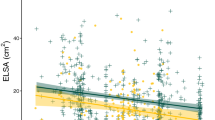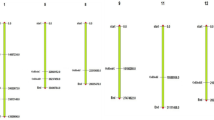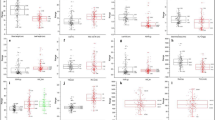Abstract
In Oxalis rosea it is found that some short-styled plants are dominant to non-short (mid- or long-styled plants) whilst others are recessive. Breeding experiments show that the short style form is under the control of two gene pairs (A, a and S, s) with shorts having either of the genotypes aaSS and aaSs. In plants segregating for A, a on an SS background, shorts appear as recessive whilst in plants segregating for S, s on an aa background, shorts appear as dominant. Among non-shorts, mids (MM, Mm) are dominant to long (mm). Genes at the three loci (i) A, a, (ii) S, s and (iii) M, m show independent assortment. These results are compared with previous suggestions of recessive short in O. rosea by von Ubisch (1926) and in O. articulata by Fyfe (1956).
Similar content being viewed by others
Article PDF
References
Finney, D J. 1952. The equilibrium of a self-incompatible polymorphic species. Genetica, 26, 33–64.
Finney, D J. 1983. Genetic equilibria of species with self-incompatible polymorphisms. Biometrics, 39, 573–585.
Fisher, R A, and Martin, V C. 1948. Genetics of style length in Oxalis. Nature, 162, 533.
Fyfe, V C. 1956. Two modes of inheritance of the short-styled form in the genus Oxalis. Nature, 177, 942–943.
Moran, P A P. 1962. The Statistical Processes of Evolutionary Theory. Clarendon Press, Oxford, pp. 159.
Mulcahy, D L. 1964. The reproductive biology of Oxalis priceae. Amer Jour Bot, 51, 1045–1050.
Von Ubisch, G. 1926. Koppelung von Farbe und Heterostylie bei Oxalis rosea. Biol Zentralblatt, 46, 633–645.
Author information
Authors and Affiliations
Rights and permissions
About this article
Cite this article
Bennett, J., Leach, C. & Goodwins, I. The inheritance of style length in Oxalis rosea. Heredity 56, 393–396 (1986). https://doi.org/10.1038/hdy.1986.61
Received:
Issue date:
DOI: https://doi.org/10.1038/hdy.1986.61



